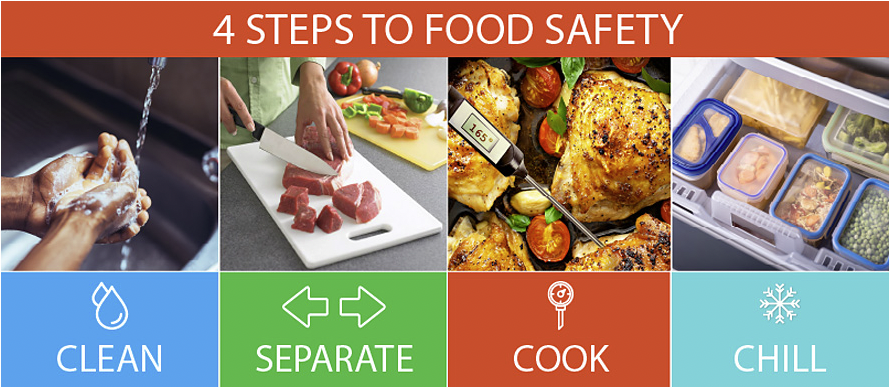Keeping Your Food Safe
go.ncsu.edu/readext?902028
en Español / em Português
El inglés es el idioma de control de esta página. En la medida en que haya algún conflicto entre la traducción al inglés y la traducción, el inglés prevalece.
Al hacer clic en el enlace de traducción se activa un servicio de traducción gratuito para convertir la página al español. Al igual que con cualquier traducción por Internet, la conversión no es sensible al contexto y puede que no traduzca el texto en su significado original. NC State Extension no garantiza la exactitud del texto traducido. Por favor, tenga en cuenta que algunas aplicaciones y/o servicios pueden no funcionar como se espera cuando se traducen.
Português
Inglês é o idioma de controle desta página. Na medida que haja algum conflito entre o texto original em Inglês e a tradução, o Inglês prevalece.
Ao clicar no link de tradução, um serviço gratuito de tradução será ativado para converter a página para o Português. Como em qualquer tradução pela internet, a conversão não é sensivel ao contexto e pode não ocorrer a tradução para o significado orginal. O serviço de Extensão da Carolina do Norte (NC State Extension) não garante a exatidão do texto traduzido. Por favor, observe que algumas funções ou serviços podem não funcionar como esperado após a tradução.
English
English is the controlling language of this page. To the extent there is any conflict between the English text and the translation, English controls.
Clicking on the translation link activates a free translation service to convert the page to Spanish. As with any Internet translation, the conversion is not context-sensitive and may not translate the text to its original meaning. NC State Extension does not guarantee the accuracy of the translated text. Please note that some applications and/or services may not function as expected when translated.
Collapse ▲ December is Worldwide Food Service Safety Month. The goals of the month are to focus on keeping food safe as it is prepared in the service industry, as well as remind us to be safe and cook properly when we are making our own food at home. Food safety rules at home and in the food service industry aren’t all that different. There are a few basic steps everyone can do to ensure food is prepared and handled safely (you can download the detailed info sheets):
December is Worldwide Food Service Safety Month. The goals of the month are to focus on keeping food safe as it is prepared in the service industry, as well as remind us to be safe and cook properly when we are making our own food at home. Food safety rules at home and in the food service industry aren’t all that different. There are a few basic steps everyone can do to ensure food is prepared and handled safely (you can download the detailed info sheets):
- Clean : wash hands and surfaces often
- Separate : separate raw meats from other foods during storage and prep
- Cook : cook to the recommended temperature
- Chill : refrigerate foods quickly after meals
Food safety is crucial to everyone. Many different disease-causing germs can contaminate foods, so there are many different foodborne infections (also called foodborne disease or food poisoning). Most of them are infections, caused by a variety of bacteria, viruses, and parasites. Harmful toxins and chemicals also can contaminate foods and cause foodborne illness. Some of the most common concerns are:
Other germs don’t cause as many illnesses, but when they do, the illnesses are more likely to lead to hospitalization. Those germs include:
- Clostridium botulinum (botulism)
- Listeria
- Escherichia coli (E. coli)
- Vibrio
For more information about foodborne illness, visit the Food Safety Portal by the CDC. To learn more about specific foodborne pathogens and organisms, download the Bad Bug Book published by the FDA.




